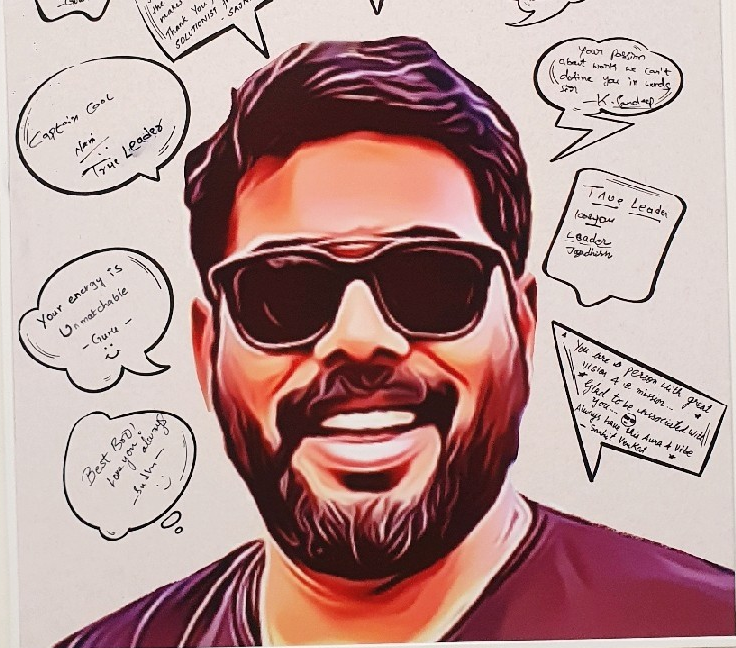
Video interviews are becoming an increasingly popular tool for recruiters, allowing them to screen candidates quickly and efficiently without the need for in-person meetings. While video interviews have many advantages, it also has several drawbacks that every recruiter must be aware of.
In this article let’s go over the seven most common challenges that every recruiter faces during video interviews. Also we shall discuss how to overcome them.
1. Technical difficulties
One of the most difficult aspects of video interviews is ensuring that the technology works properly. While most video conferencing platforms are reliable, there is always the possibility of technical issues such as poor connection, audio problems, or glitches that can disrupt the interview. This can be frustrating for both the interviewer and the candidate, and it can even lead to a negative impression of the company if the technology does not work as expected.
To address this, it is critical to test the technology beforehand and ensure that the candidate has a stable internet connection as well as a working microphone and webcam. It is also a good idea to provide detailed instructions on how to use the video conferencing platform and troubleshoot any potential issues.
Additionally, recruiters can consider partnering with a technology provider or recruitment consultant who can assist with technical support and provide guidance on the best tools and platforms for video interviews.
2. Lack of personal connection
 Another challenge of video interviews is the lack of personal connection between the recruiter and the candidate. This can make it difficult to build rapport with the candidate. Not only that, it would be hard to assess the candidate’s personality and communication skills.
Another challenge of video interviews is the lack of personal connection between the recruiter and the candidate. This can make it difficult to build rapport with the candidate. Not only that, it would be hard to assess the candidate’s personality and communication skills.
In an in-person interview, the environment can play a major role in setting the tone and making the candidate feel comfortable. In a video interview, however, the candidate is often in a less controlled environment, potentially at home or in a noisy office. This can make it difficult for the interviewer to create a professional atmosphere, and can also make it more difficult for the candidate to focus and give their best performance.
To overcome this, recruiters can use open-ended questions and engage in small talk to create a more natural conversation.
Additionally, recruiters can consider providing guidelines on how to prepare for the video interview and create a professional setting, such as choosing a well-lit and quiet space, dressing appropriately, and avoiding distractions. By taking these steps, recruiters can create a more engaging and professional atmosphere for the video interview.
3. Distractions and interruptions
It is common for candidates to encounter distractions and interruptions during video interviews, such as loud noises, pets, or even children. This can not only affect the candidate’s performance but can also make it difficult for the recruiter to assess their skills and abilities.
To address this, challenge, recruiters can encourage candidates to find a quiet and distraction-free space for the interview. They can also provide clear instructions on how to handle interruptions and ask the candidate to inform them if they are experiencing any distractions.
Additionally, recruiters can consider conducting the video interview at a scheduled time that is convenient for both parties and allows for sufficient time to address any potential interruptions. By taking these steps, recruiters can minimize distractions and ensure that the video interview is as productive and effective as possible.
4. Misinterpretation of body language and cues
Another challenge with video interviews is the possibility of misinterpretation of body language and cues. This is because nonverbal communication can be difficult to read on a screen, and it is easy to miss important cues, such as facial expressions and gestures.
To overcome this challenge, recruiters can try to focus on the candidate’s verbal communication and pay attention to their tone of voice and word choice. They can also use open-ended questions and ask for clarification if they are unsure about the candidate’s responses.
Additionally, recruiters can consider conducting a mock video interview with a colleague or friend to practice reading and interpreting nonverbal cues on a screen. By taking these steps, recruiters can improve their ability to interpret body language and cues during a video interview.
5. Lack of diversity and inclusion
 When it comes to diversity and inclusion, video interviews can also be a challenge. This is because they can exclude candidates who do not have access to the necessary technology or are uncomfortable using video conferencing platforms.
When it comes to diversity and inclusion, video interviews can also be a challenge. This is because they can exclude candidates who do not have access to the necessary technology or are uncomfortable using video conferencing platforms.
To address this, recruiters can provide candidates who are unable to participate in a video interview with alternative options such as a phone call or a written questionnaire. They can also provide candidates who are unfamiliar with the technology with clear instructions and support.
Additionally, recruiters can consider implementing diversity and inclusion training for their team and incorporating inclusive hiring practices into their recruitment process. By taking these steps, recruiters can ensure that their video interviews are inclusive and accessible to all candidates.
6. Ensuring that they are fair and objective
One of the most difficult aspects of video interviews is ensuring that they are fair and objective. In-person interviews allow the interviewer to better assess the candidate’s body language and other nonverbal cues.
These cues can be more difficult to read in a video interview, and there is a risk that the interviewer will make assumptions about the candidate based on their appearance or other factors that may or may not be relevant to the job. This can result in unconscious bias and an inaccurate assessment of the candidate’s skills and qualifications.
To overcome this challenge, recruiters can use structured and standardized interview questions that are fair and objective. They can also provide clear criteria for evaluating candidates, and train their team on how to avoid bias and subjectivity during the video interview process.
Additionally, recruiters can consider using a scoring system or checklist to record and evaluate the candidate’s responses and involve multiple team members in the decision-making process. By taking these steps, recruiters can ensure that their video interviews are fair and objective, and accurately assess the candidate’s skills and abilities.
7. Need of adapting to the format
Another difficulty with video interviews is the need to adjust to the format. The interviewer can ask follow-up questions and have a more fluid conversation with the candidate during an in-person interview. The format of a video interview is more structured and rigid, with the interviewer asking a predetermined set of questions and the candidate responding. This makes it more difficult for the interviewer to gauge the candidate’s personality and fit with the company culture, as well as for the candidate to fully express their qualifications and experiences.
To overcome this challenge, recruiters can provide clear instructions and guidelines on how to prepare for the video interview, and encourage candidates to practice and familiarize themselves with the technology beforehand. They can also use open-ended and conversational questions, and provide feedback and support throughout the interview process.
Additionally, recruiters can consider conducting a mock video interview with a colleague or friend to practice the format and get comfortable with the technology. By taking these steps, recruiters and candidates can adjust to the video interview format and ensure a successful and productive experience.
Recruiters should ensure that they are able to effectively evaluate candidates and make the best hiring decisions for their company by being prepared and addressing these challenges head on.

Raju Thammala is the founder of WebPipl, an AI-based recruitment company revolutionizing the tech hiring process with products like video interviews, ATS software, etc.
As CEO and founder, Raju Thammala is passionate about leveraging technology to deliver next-gen recruiting services. In his free time, Raju enjoys reading and exploring new cuisines or jet-setting to exotic destinations.
